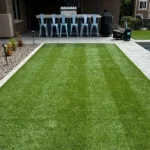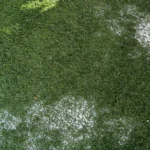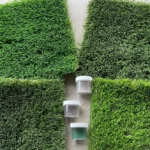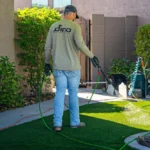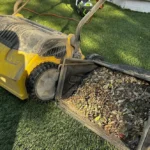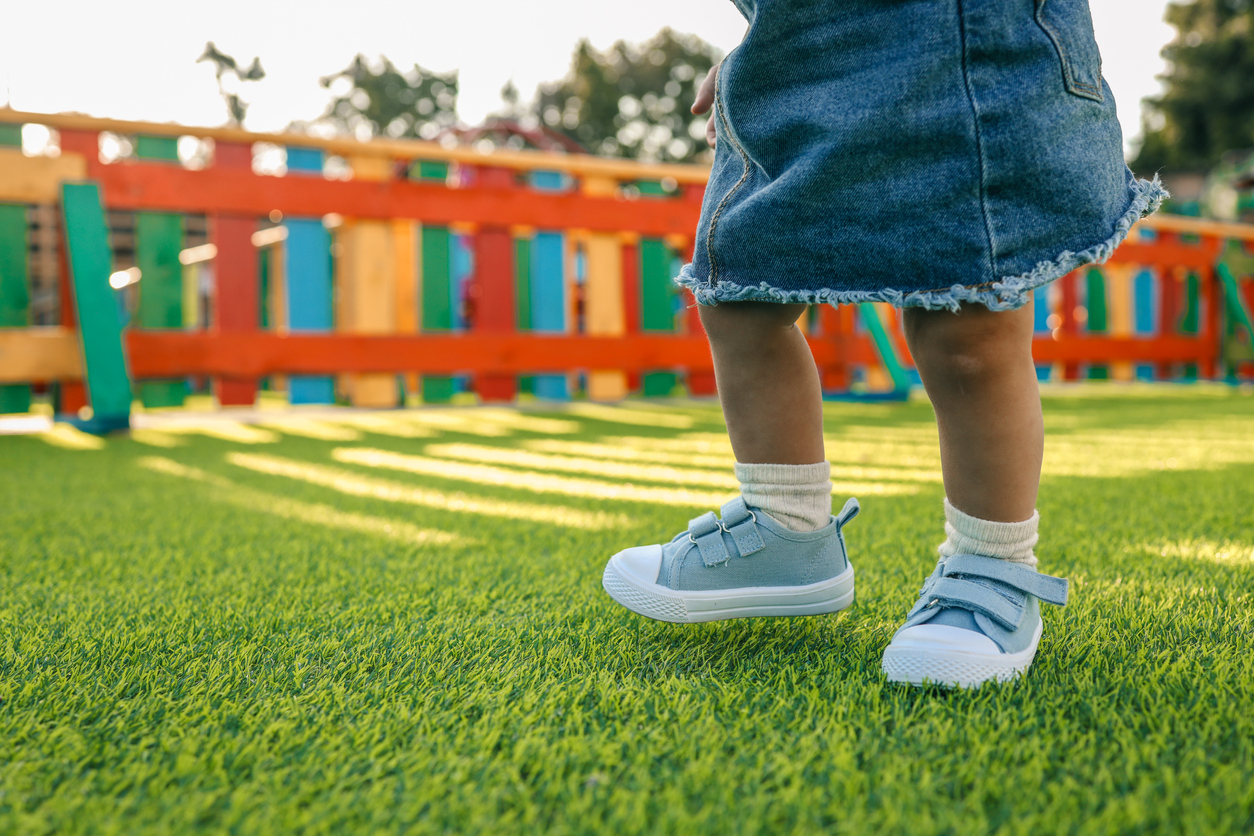
Are you considering a synthetic lawn and wondering whether it’s kid—and pet-safe? Safety depends on quality materials, proper installation, and simple, regular upkeep. Choose soft, UV-stable fibers, high-flow drainage, and smart infill; add shock pads beneath play sets. With these features, synthetic turf can be a comfortable, low-maintenance alternative to natural grass. Still, be mindful that surfaces can heat up in direct sun, and lawns need cleaning to stay fresh, hygienic, and worry-free for family play.
1. What Artificial Grass Is Made Of (and Why It Matters)
- Fibers: Most artificial grass uses polyethylene for softer grass blades; nylon is tougher but can feel firmer. Look for yarns designed to resist matting under foot traffic.
- Backing: Perforated or high‑flow backings help move dog urine through quickly and reduce odor buildup. Strong tuft bind lowers the chance of fibers being pulled out.
- Infill: Sand, coated sand, TPE/EPDM, zeolite, and crumb rubber keep blades upright and add cushion. The choice affects heat, cleanliness, and feel.
- Shock Pads: Under play equipment, a pad beneath the turf can soften falls.
2. Safety for Kids
Artificial turf with impact protection can be safe for kids around swings, trampolines, and climbing frames. Use a shock pad and ensure it meets ASTM F1292. For skin comfort, choose smoother yarn and keep blades brushed upright. Lawns need no fertilizers or frequent pesticides; rinsing controls dust and pollen. Turf runs hotter than natural grass; see heat-management tips for comfort.
3. Safety for Pets
Pet-friendly turf cuts mud, upkeep, and urine spots. For freshness, prioritize high-flow backing (over a permeable base) so urine drains fast, add odor-absorbing infill, and rinse busy zones. For durability, choose dense fibers, strong tuft bind, and well-secured seams; dog-specific turf is toughest. For heat comfort, touch-test surfaces, provide shade, or rinse. Is artificial grass safe for dogs? Yes—with these choices, it is.
4. Infill Options Compared for Families
- Crumb Rubber: Cushioned and proven on sports fields; can feel warmer and may track—less common for backyards today.
- Silica Sand or Coated Sand: Budget‑friendly and stable; coated versions help reduce dust and heat.
- TPE/EPDM: Clean, resilient granules with consistent performance and comfortable feel.
- Zeolite and Organic Blends: Help absorb odors from dog pee; they may need periodic refreshment to stay effective. Pick an infill that balances heat, cleanliness, and upkeep for your space and pet use.
5. Managing Heat on Hot Days
Synthetic turf can radiate heat and feel warmer than natural grass in direct sunlight. Comfort tips:
- Choose lighter turf shades and cooling infills.
- Add shade sails, trees, or umbrellas.
- Schedule play for cooler hours
- Quick hose‑down before use on very hot days
- Touch test: If it feels too hot for your hand, pause play or rinse it
These simple steps help keep a comfortable environment for kids and furry friends.
6. Maintenance Made Simple
Artificial pet turf is low-maintenance, but it still requires maintenance. For anyone still wondering, “Is artificial grass safe for pets?” The care routine below shows how cleanliness and odor control are handled day to day.
- Daily or As Needed: Remove leaves, sticks, and other debris. Pick up solid waste promptly.
- Weekly: Rinse busy areas where your dog urinates. Brush fibers to keep them upright.
- Monthly: Deodorize with a pet‑safe product or a mild water and vinegar mixture (a diluted vinegar rinse works well).
- Seasonally: Check seams and edges, top up infill in high‑traffic lanes, and ensure drainage is clear. Regular cleaning keeps odors in check and protects the lawn’s aesthetic appeal.
7. Environmental Considerations
- Water Savings: Artificial grass can reduce regular watering and lower water bills.
- Fewer Chemicals: Many households use fewer lawn care inputs than with a natural grass lawn.
- Heat and Layout: Turf can warm up; mix in plant beds and shade to balance.
- Pests: Ticks prefer tall grass and leaf litter. Short synthetic fibers give them fewer hiding spots, though ticks live in shrubs and yard edges, so remain alert.
- End of Life: Ask about recyclable products and take‑back programs. Parents of very young children often ask, “Is artificial grass safe for toddlers when they’re crawling and putting their hands on everything?” Choose products with current safety testing, keep a simple rinse routine, and add shade where possible to create a gentler, cooler surface.
Ready to explore pet‑friendly turf and kid‑safe options that look great and need minimal maintenance? Book a friendly consultation with Dino Turf Care. We will review proper installation, share third‑party test data, and help you compare a pet turf system, infills, and upkeep plans. Let’s design synthetic grass that works for your family and your furry friends.

